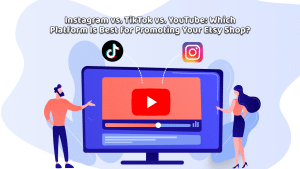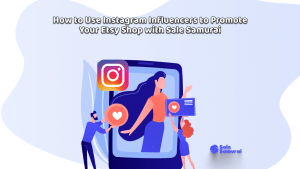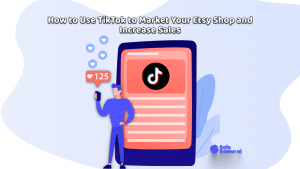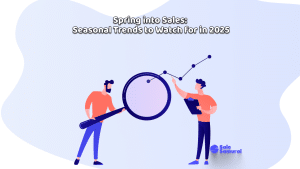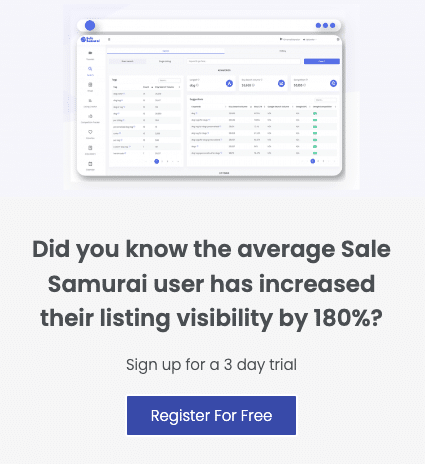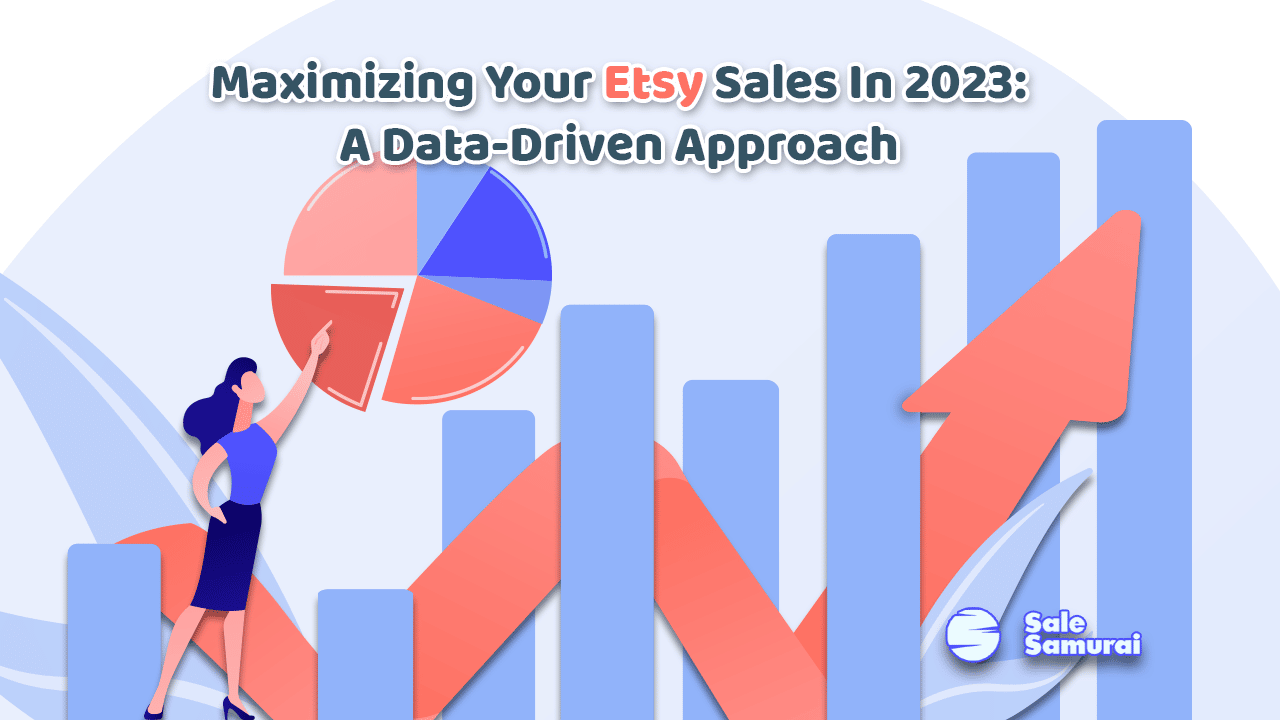
The holidays have come and gone, and suddenly, we are in the year 2023. For many, this is a time to reflect on the past and make plans for the future.
For Etsy sellers, it isn’t so different. The start of a new year is a time to look at the past year’s data and make a game plan for the future of your shop.
Maximizing your Etsy sales through studying past sales and trends is a foolproof way to gain a better understanding of how your shop is performing- and what its weaknesses might be.
This article talks about reviewing your Etsy seller data from 2022 and making a plan for maximizing future sales. Knowing what sells and why is crucial to your shop’s long term success, so let’s talk more about how to analyze and strategize.
Step 1: Review Your Etsy Sales Data From 2022
The first thing you’re going to want to do is look at your sales data from the previous year. One of the most quintessential numbers you can look at as a seller is revenue- how much did you make last year?
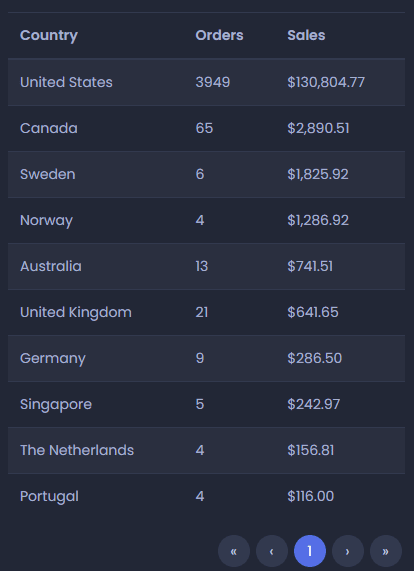
An example would be observing what time of the year you make the most sales- for the majority, it’s around the holidays. If, however, you sell parasols, your busiest time of the year might be summertime.
Another thing to consider with revenue is your conversion rate. Your shop’s conversion rate is the number of sales divided by the number of visits to your shop times 100. Let’s say you received 500 visitors and made 25 sales- that’s a conversion rate of 5%.
Etsy makes it easy and calculates your conversion rate for you- you can see it in the homepage of your Shop stats.
Most sites out there will tell you to shoot for 1-3%, which can be an intimidating statistic. Some shops have rates as high as 5%, and some, especially new shops with little to no reputation, have very low rates of about 1%.
Another metric to use is seeing what listings performed the best- and which ones didn’t. If you see that a particular listing is doing well and has a high clickthrough or conversion rate, you can make the assumption that that listing will do well in the long run.
What about a badly performing listing? The problem could be anything from image quality to the description to the actual product. It’s important to give each listing the same care, attention, and consistency so that it performs as best as it can.
The number of listings you have had last year alongside the number of sales can also be a unit of measurement. Sometimes, more listings lead to more sales because of the exposure they give to your shop, but sometimes, the listing size is irrelevant and might actually hurt your shop.
The prices of your listings are also an important metric because, despite what basic economics would lead you to believe, cheaper price tags won’t always bring about more buyers. In fact, it’s been shown that if listings are priced competitively, some people are more likely to buy from you because they believe that the item is more desirable, or the quality is superior.
Let’s talk a bit about promotions and sales, because those play a big role in determining how to set them up in the future. Sales and promotions? Isn’t that the same thing?
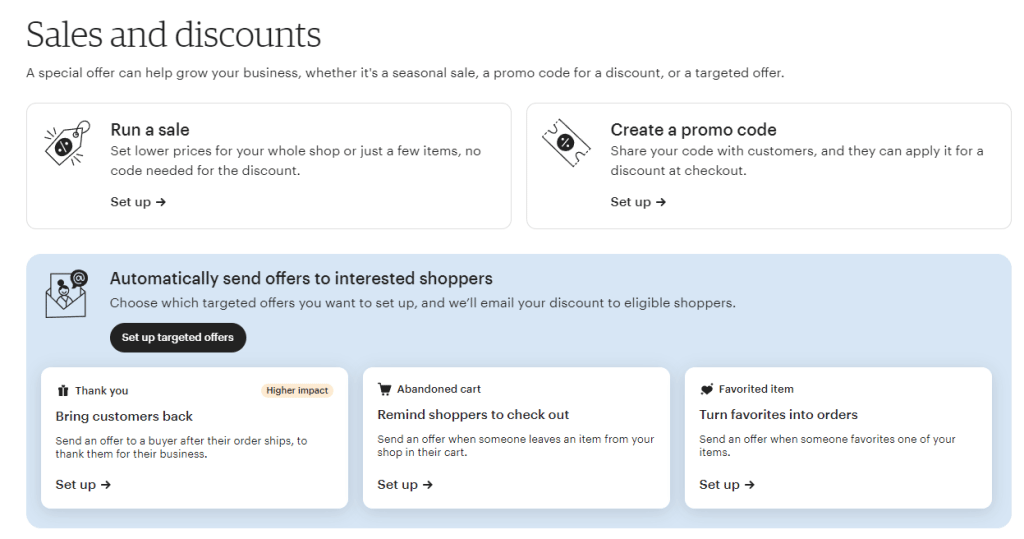
While running sales and promo codes is a very similar thing, it’s not the same. Running a sale can be storewide or on select items in your shop and has a choice between a percentage off or free standard shipping.
A promo code can be one of three things- percentage off, fixed price off, or free standard shipping. In addition, a promo code can be placed in your announcements, social media pages, or messaged directly to potential buyers, making it more customizable for a target audience.
When you look at last year’s sales and promotions, you will see that some performed better than others. It is always helpful to isolate the variables that played a part in making those sales successful.
That can include the percentage or fixed price discount chosen, the listings selected for the sale or promotion, the time of year, of course, and, in the case of a promo code, the recipients it was sent to.
You can measure how well your sales and promotions are doing by going into your Sales and discounts section of your shop. You will see things like Orders with a discount, Items sold, Average order value, and Revenue from Discounts.
What exactly is the average order value (AOV)? That’s the average amount someone spends in your shop. Looking at this statistic when running a sale or promotion compared to other periods in your shop’s history will help you determine how likely customers are to buy something pricier or to buy more than one thing in your store when given a sale or promo code.
Let’s touch up on traffic and traffic sources. On Etsy, traffic is either brought in by Etsy, or you, the shop owner. Etsy brings you traffic through its search and any of its pages that might showcase your shop or one of your listings.
You bring the traffic through Etsy Ads, social media, or “direct or other” traffic. What do those two mean? Direct traffic is when someone types your URL directly into the search bar, or clicks on a link to your shop from an email, social media page, blog article, or bookmark.

Other, or indirect traffic, is any organic traffic to your shop that comes from a search engine such as Google or Bing.
If you ran Etsy Ads the previous year, it’s worth looking at how well they did. While shop owners don’t have a lot of control over ad customizability, they can control the listings advertised and the total amount they want to spend per day on the ad.
That being said, knowing which ad did best can be a game-changer for future ad endeavors. The time of year- even time of month- could play a big part in the success of the ad, as well as the choice of listings and amount of money invested.
Consistency is important, so when analyzing an ad that you have changed over the course of its lifetime might be tricky. To put it more clearly, if you change the listings or price of the ad day to day, you won’t get conclusive results on how well it performed.
This means that the best ads to analyze are those that have been run for longer, and have had a consistent amount of money invested in them.
Step 2: Identify Opportunities For Growth In 2023
There are plenty of areas in your shop stats that might present an opportunity for growth. Running promotions, sales, ads, making more listings, and even making email signups are just a few of the things you can do to increase your sales.
You might see that your conversion rate is high right after you’ve run a promotion targeted towards people who have favorited your shop in the previous year. This presents an opportunity to make a similar promotion this year, with new and more profitable listings.
Maybe you have observed that more listings bring in more sales. That might mean that cranking out more of those this year can bring in more sales as well, or go back over the less successful listings and optimize them.
It’s all about identifying patterns and trends, because, if you think about it, buyer behavior stays relatively predictable depending on the situation, and if you analyze it correctly, you can come up with some surefire ways to increase your sales and traffic.
Step 3: Set Goals For Your Etsy Business In 2023
It’s important to set realistic goals that you know you can achieve within a reasonable timeframe and means. One way to do this would be to create a visual representation of your past sales and conversion rates and plot numbers that are higher than previous ones, but are obtainable.
This can be done through Excel spreadsheets, Google Docs, and even Canva. Take your conversion rate, for example. Let’s say you started last January with a rate of 2.3%, and worked your way up to a rate of 3.7% at the end of December. You could plot every month’s rate as a line graph and see based on the trend what a likely conversion rate could be for this year.
Another way to set goals is to write down all your strategies and opportunities down in a physical or virtual space, where you have access to them. That way, you always have a reminder of what to shoot for in reach.
What kinds of things can you set goals for? Excellent question. While a sales goal is good to have, it’s a good idea to have other goals set that lead up to that final result.
![]()
For starters, you can set a goal for how many listings you want to make a month. Keep it reasonable and hold yourself accountable as you make these goals.
You can also set goals for the number of clicks you want your Etsy ads to reach. This is a bit trickier to plan out because ad clicks fluctuate, but if you have past data to work with, you can guesstimate how much to throw at ads to reach the desired clicks.
You can also set a goal to raise your conversion rate, Return on ads spent (ROAS), and AOV. Again, it’s important to look at past trends in your data and isolate variables to further understand what works and what doesn’t.
Step 4: Create A Plan To Achieve Your Goals
Creating a plan goes hand in hand with making goals, but there’s more concrete steps involved. When you create a plan, you are curating a roadmap for your shop. Thus, it should be easy to follow and manage.
Plan out everything from your listing numbers to the ads you want to run to the sales and promotions you want to make. Break it down into these super-specific categories so it doesn’t feel overwhelming, and to keep yourself organized.
Step 5: Implement And Test Your Plan
If you want to see results, it’s best to use tried and true methods that have worked for you last year. However, there is always room for experimentation. When trying a new sales tactic, it might be a good idea to implement one strategy at a time to isolate variables.
This way, whatever you changed in your strategy will be easily attributed to the change in sales, conversion rate, et cetera.
Once your plan is implemented, test it regularly and keep a close eye on your shop stats. For example, if you run a shop wide promotion, note the number of views, visitors, the conversion rate, the AOV, number of sales, and total revenue as you go forward.
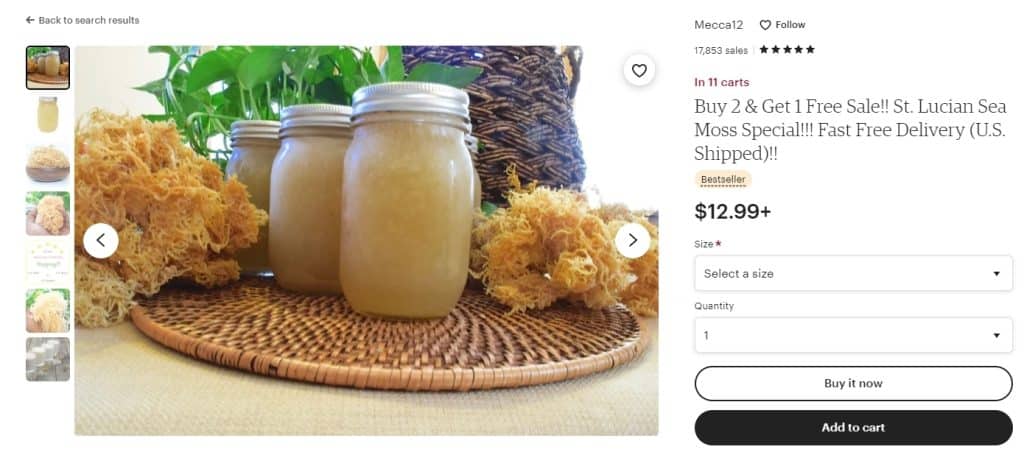
Leave no data out when you test out your new plan because every data point counts. Shop stats are both an art and a science. If you decide to advertise your shop on a brand new social media platform, you must pay special attention to both what you are doing and what buyers are doing at the same time to reach conclusive results.
Step 6: Continuously Monitor And Adjust Your Strategy
After you have implemented and tested your strategy, you will want to make appropriate changes if the results are not what you had hoped for. Again, isolating variables is important here, as well as retaining a flexible set of goals.
If your strategy isn’t working out how you had hoped, being responsive and adaptive is pivotal. Remember, it is never too late to start making goals for your shop, and the more you practice strategizing, the better you will get.
